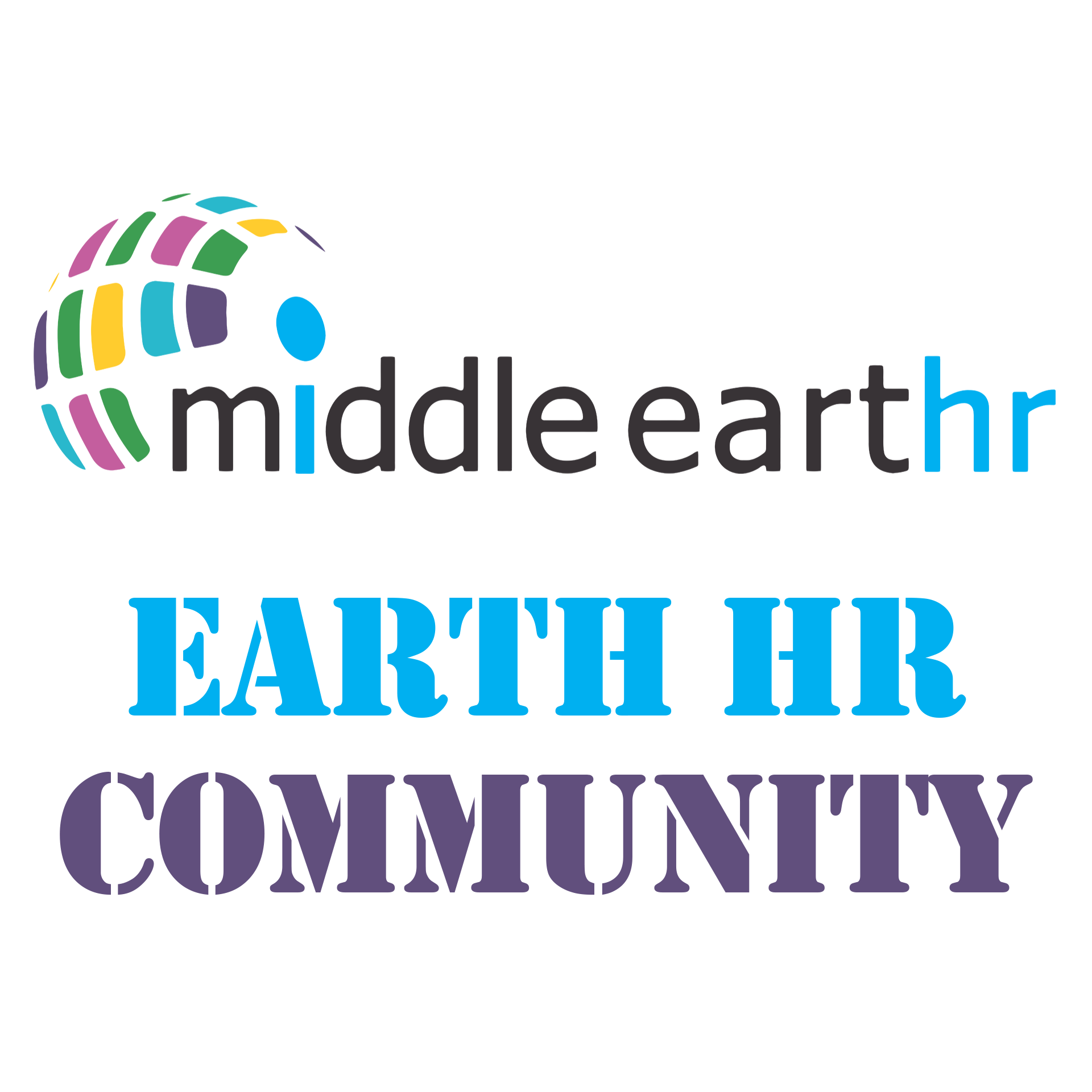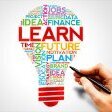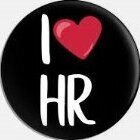Leaderboard
Popular Content
Showing content with the highest reputation on 02/02/2021 in all areas
-
Life Skills are psycho-social competencies that enable an individual to deal effectively with the demands and challenges of everyday life . There are 10 Life Skills . Let us divide the 10 Life Skills into two categories ;- Thinking Skill Social & Emotional Skill A. THINKING SKILLS SELF- AWARENESS This indicates the ability of an individual to introspect and to identify his own resource as well as his areas of improvement(AOI). CREATIVE THINKING This competency makes it possible for an individual to formulate creative ideas and to generate innovative products/services. CRITICAL THINKING This competency facilitates an individual to analyse the market opportunities , appraise the competitors , study the potential of the innovation , strategic segmentation , strategic positioning etc. DECISION MAKING This competency enables the individuals to take the right decision from the situational perspective PROBLEM SOLVING This competency facilitates an individual to analyse problem, trace out the root cause of the problem and to generate strategic inputs for alleviating the problem. B. Social Skills & Emotional Skills EFFECTIVE COMMUNICATION It makes it possible for an individual to express his views and to convince others to accept the logical rationale of his views. INTERPERSONAL RELATIONSHIP DEVELOPMENT It helps an individual to develop conducive relationship with others EMPATHY It facilitates an individual to perceive the problems of others as if these were of his own. It facilitates an individual to become sensitive to the problems of others and eventually to take initiative to solve their problems. It is an essential competency of a Social Entrepreneur. MANAGING STRESS This is the competency of overcoming/subjugating stress in an adverse , problematic situation COPING WITH EMOTION This is the competency of maintaining a harmony between rationality and emotion. It facilitates an individual to maintain composure and emotive equilibrium even after achieving success2 points
-
Job Role: Support Executive (HR) Type of Job: Full-Time Name Of The Company: Rina Experience Required: 1-3 yrs CTC : Not-Disclosed Location: Mumbai, Maharashtra Industry: Classification society URL: Click Here To Apply ----------------------------------------------------------------------------------------------------------------------------------- Job Role: Global Sourcing Specialist (Talent Acquisition) Type of Job: Full-Time Name Of The Company: Thales Group Experience Required: 6 months- 3yrs CTC : Not-Disclosed Location: Mumbai Industry: Aerospace company URL: Click Here To Apply ---------------------------------------------------------------------------------------------------------------------------------------------------------1 point
-
This video will help you to develop effective educational video script in 5 easy steps,what are the steps need to take into consideration while designing the script, tools and techniques to make your script engage. Click here to know more -->1 point
-
Thank you Amonia. if you have any topics to share to prepare a small you tube video for other learners.1 point
-
1 point
-
As we move forward in an ever changing globalized business environment, L&D as a function has come a long way - managing a fine balance between the traditional approach, methodology, and structures, retaining the core value proposition with equivalent focus onto the local business/workplace requirements unique to each organization whilst at the same time evolve as a strategic business partner to organizations, building and leveraging on best in trade practices and linking them to core organizational strategies and business plans. Upscaling the skillset and competencies of the workforce in the VUCA world has emerged as the key differentiator, and unformidable strength and an opportunity to navigate through the cut-throat competitive service-oriented organizations. A Four A framework for a successful competitive L&D function: Agility: Creating a dynamic learning environment focusing on the changing requirements/needs of the workforce, strategizing learning initiatives around the key focus areas/ gaps, proactively organizing customized, relevant and meaningful interventions to engage employees and scale up their skills required for future growth and transformation of the organization. Alignment: The learning strategy should be in alignment with the talent transformation strategy and the organizational business plan. All L&D plans and activities of conceptualizing and implementing new learning interventions, creating goal-oriented employee-centric continuous learning experience, and Enabling the workforce with requisite skills and knowledge to intrinsically support and drive the objectives of an organization should be measurable & impactful - having specific outcomes which are woven around the long- term organizational goals and in tandem with the values and vision of the organization. Adherence: Establishingpolicies/processes/procedures and related matrices to measure the learning success, compliance to organizational mandates along with the business impact it intends to create on key stakeholders, innovation & creativity in designing & delivery of learning journeys helps in maintaining desired quality standards in accelerating organizational transformation. Ambidextrous: L&D function of evolving organizations should follow ambidextrous approach in their regular operations which involves exploiting present capabilities while being open to breaking with the past and ready for new opportunities Learning and development plays an important role in giving shape, direction, and context to the organization. Hence, it is crucial for the function to be flexible, versatile, responsive, and aligned to the current and anticipated future requirements of the organization for a stable and continued growth.1 point
-
Once a Client Director won a deal of $2 billion from one of the European client. His team was all excited to work towards a plan in setting up a project team which can match the client expectations and help the company make more profits. But soon they realized that they would be unable to do so without – right people. This scenario is common to any business that we may operate in. What we fall back on, is setting the right WORKFORCE STRATEGY that has been every CEO s concern since past few years. Considering the change in demographics, economic & political scenarios that every business is going through today, it is crucial that we design our workforce strategy around talents. Finding skills is no big deal, there is loads of it in the market, but to find the right one at the right time is a challenge. In addition, 80% of the skills that are available in the market is suitable for low-medium complexity jobs. To find the right talent for high complexity jobs, is an uphill battle! Solution? It’s high time, the recruitment focuses on the human aspect of talent. Trying to incessantly, meet the client requirements, we tend to ignore the fundamental aspect of hiring a talent, their competency and mindset. The building blocks of right strategy centers on skills fungibility, coaching and mentoring and most importantly, rewarding the HiPos. Millennials today are more demanding in their careers, they value their career track and flexibility more than dedication & long service. As per the latest statistics, US loses around $30.5 billion per year due to turnover of millennial employees. Corporations need to be willing to embrace the uniqueness that this age group provides. A strategy is nothing if hasn’t factored in the human element of the assets that we own – our people. Hence it’s very important for us to start acting on these human aspects than focusing only on business strategies and profits.1 point
-
Today’s 21st century global business model requires companies to operate beyond the brick-and-mortar structure by having virtual settings to accommodate telecommute workforce. This trend has generated controversies regarding implementation of virtual teams mainly due to talent management challenges. In order to mitigate these challenges, companies need to think through some of the key questions – 1.Do we have telecommute work policy with guidelines clearly framed out? Orientation/on-boarding process, regular work hours; check-in systems; periodic in-person meetings; measurement of work production and implications in failing to attain work objectives/milestones 2.Do we have the right fit of employees with the necessary personality, attributes and traits to work in a remote work culture? Research and surveys conducted in organizations have shown that interdependent work teams thrive in a virtual work settings. Some of the key attributes/traits of individuals in virtual work setting include self-direction, self-motivation, accountability, past experience in remote work setting, collaboration, flexibility and strong communication skills Research has also pointed to the fact that companies can hire diverse and specialized skill set individuals as there is no location constraint. 3. Is our technology advanced and supportive of remote work culture? Well-established servers, cloud technology, VPN access, privacy and security settings, high-end video and audio conferencing, chat rooms and fast internet and dialing speed with minimal layers to bypass through remote server/s to access the work application/s Advanced Intranet that consists of online policies/guidelines, dashboard and metric systems and remote project management systems (like Basecamp, Asana) to facilitate performance management, social connections like blogs/forums and two-way communication systems 4. Are the managers/ supervisors/ leaders and Human Resource practitioners trained and developed to manage telecommute workforce? Management by objectives and ROWE (Result Oriented Work Environment) Social Intelligence to enhance a collaborative work environment Facilitation of self-managed teams Virtual workforce can be a boon to an organization, provided the systems and policiesare implemented in a well-structured way. Hence, leaders and HR professionals need to come up with innovative strategies to build a globally diversified virtual workforce that fosters a culture of responsibility, engagement and success.1 point
-
Improvisation and expansion of present skillset or adding any new skill to the professional branding of employees is the new “Learning Investment Scheme” in the business world. The process of up and re Skilling refers to “upgrade” or “upscale” one’s skill to next grade or scale whereas “recalling” or “recycling” existing skill into new skill to gain a competitive edge. In India, the figure of millionaires reached 400 million-born after 1982 co-work with the first digital age band of India; GenZers who born between 1995-2012. Both are very different from each other’s skill set needs. But the similarity of both cohorts like high confident learning of new skills, positive buttressing attitude, and high economics. In the process of adapting and learning marketplace for ourselves as well as for others; there should be to reappraisal in all possible dimensions and directions. It should be implemented at each hierarchical level of the organization. The focus should be on sync of skills provided that with the rate of business disruptive like form podcasts, conversational artificial Intelligence (AI),Virtual Reality (VR), Augmented Reality (AR), Robotics Process Automation (RPA), virtual communication channels (Google Meet, Zoom, Microsoft Teams, Trello, GQeues), (Internet of Things (IoT), work from home (WFH), work form anywhere (WFA), block chain, crypotcurrency, computer clouding, big data, to ArogyaSetu app (mobile applications) to track and fight against the Covid-19. Any misalignment may lead to wastage of resources, currency, opportunity, burnout and psychological lockdown. Let’s ‘look over “APACE”into the need of the hour (A)Awareness: awareness and understanding of pictures of cultural, political, industry, community and world will help to predict “hot skills” and maintain re-skills (P)Problem solving: Initiatives toward solving problem bring long-life learners’ and more resourceful environment. (A)Analytical Skills: “Data is the new oil”, undoubtedly data, numbers, images, words and even thoughts can be mapped to scrutinize and prognostic the future trends, (C)Communication Skills: “How we speak is more important than what we speak”. Therefore body language, vocal skills, written skills is very important. (E)Emotional Intelligence: The awareness of self and other emotions at the workplace create ‘emotional empathy’, ‘mirror thinking’ and provide space for healthy thinking. In nutshell, we have to “value the skills” in which are cultured in the 21st century and be part of the future by doing little learning today.1 point
-
In the fast paced environment of hiring nos. / filling candidates as per Project requirements, there are instances where the candidate turns out to be best performers / failures on the floor post recruiting. If the Recruitment team has to go beyond the resume, first of all the team should be adequately trained and provided with the required resources in terms of Time, Manpower and support. About RESUMES How a Resume looks in general • A brief resume which talks about personal details and not in detail about professional achievements • A resume, where the resume talks about both personal and professional details in brief • A resume where the details run in pages giving a detailed description of all personal and professional achievements How to Go “BEYOND THE RESUME” • As a Recruiter / Interviewer, he/she has to go through the resume, prepare notes on the questions to be asked or the detailing to be done. • Once done, the candidate shall be called and a detailed discussion shall happen covering all aspects right from schooling to the recent job and the achievements. • Recruiter / Interviewer should spend at least 30-60 minutes with each candidate to understand the Strengths / Areas of Improvements / Career highlights / expectations and record the same • The details should be shared with other Interviewers so that they can add their comments / suggestions • Prepare a detailed notes / synopsis of each candidate culminating as a CANDIDATE PROFILE, so that the candidate is known thoroughly By religiously following the procedure, the details can be captured and the candidate can be placed in the right position by providing right environment All teams in the Organization should plan well in advance about the requirements, so that Recruitment team is provided adequate time to hire the right candidate. Above all, the Recruitment Team should be trained enough in mastering the art of going “BEYOND THE RESUME”1 point
-
The COVID 19 pandemic has made the world stand still, but we can take advantage of this serious crisis to do things that you think you could not do before. The virus has forced learning heads and business leaders to rethink the learning experience of the individuals employed by the company by adopting different strategies to improve productivity. Strategy 1: Redesign Organizations as a learning perspective must create a response team. The team should be cross-functional in nature and members include learning officials, HR business partners, IT, and other operational departments. This team will be assessing current programs, deciding what is critical to learning success, and changing the program(s) and each program must discuss in detail. Members should determine what offerings are essential and easily adaptable to a virtual or digital-only format. Strategy 2: Digital Learning organizations must look for opportunities to create, grow, or enhance digital learning opportunities. According to Technavio (a UK based market research organization) report that the eLearning market is expected to increase in size by 2025 reaching $325 billion. So L & D heads to take inputs from the core team mentioned in the strategy 1, find new ways to create engaging experiences which are experiential and fun by incorporating more gamification, virtual reality and augmented reality for corporate learning.” Where required companies will create an ecosystem devoted to creating an AI-powered skills inventory, reskilling and exploring new private partnerships with traditional and non-traditional institutions of learning, as well as Ed-tech startups.” Summation Life as we know it no longer exists and a new one has taken its place due to the impact of the coronavirus. L&D department will play a major role in equipping their knowledge-based workforces with the thinking, the knowledge, the best practices, & the skills to achieve the organization’s goal. Learning must continue and teams need to be transparent and agile as the days and months move forward. Continue looking at new options and technologies to ensure your employees are able to develop and reskill in this new environment.1 point
-
As per the dictionary, mindset means – an established set of attitude(s) held by someone. This also emphasizes the fact that each one of us is different in their own unique perspectives. In today’s times, we are too busy but very less occupied, having no time for ourselves. We are running in a rat race to be the best, to stand out from the crowd, forgetting the fact that it’s us, which makes the crowd and the society. On the contrary, our society has set some minimum acceptable standards with respect to age groups, success factors, financial concepts, family and even social fundamentals. The standards are so diverse that we are unable to fit into it in one go. Can we not believe that every mindset is good? Complete? Acceptable? Unique? We do not need to create winning mindsets, because every mindset has the potential to win. Relating to the ADDIE model of Instructional Design its five phases are as below: • Analysis – Here, the instructional problem is clarified, instructional goals and objectives are established. • Design –This phase deals with assessment instruments, exercises, content, subject matter analysis, lesson planning and media selection • Development –This is where the developers create and assemble the content assets that were created in the design phase. • Implementation - This is where the developers create and assemble the content assets that were created in the design phase. • Evaluation –This consists of two parts: formative and summative. The training field majorly emphasizes on the reskilling and upskilling of individuals rather than creating new individuals. “There is no greater suffering than constantly measuring yourself and coming up short, except perhaps the realization that your suffering is hurting others. But where do we learn these things? We don’t come crying out of the womb because of our birth weight or because we have no money in this brand new world. We learn to measure and we learn to attach our self-worth to those measurements.” To sum up, let us be more open and acceptable to all mindsets and perspectives, and win together…1 point
-
In the fast paced environment of hiring nos. / filling candidates as per Project requirements, there are instances where the candidate turns out to be best performers / failures on the floor post recruiting. If the Recruitment team has to go beyond the resume, first of all the team should be adequately trained and provided with the required resources in terms of Time, Manpower and support. About RESUMES How a Resume looks in general • A brief resume which talks about personal details and not in detail about professional achievements • A resume, where the resume talks about both personal and professional details in brief • A resume where the details run in pages giving a detailed description of all personal and professional achievements How to Go “BEYOND THE RESUME” • As a Recruiter / Interviewer, he/she has to go through the resume, prepare notes on the questions to be asked or the detailing to be done. • Once done, the candidate shall be called and a detailed discussion shall happen covering all aspects right from schooling to the recent job and the achievements. • Recruiter / Interviewer should spend at least 30-60 minutes with each candidate to understand the Strengths / Areas of Improvements / Career highlights / expectations and record the same • The details should be shared with other Interviewers so that they can add their comments / suggestions • Prepare a detailed notes / synopsis of each candidate culminating as a CANDIDATE PROFILE, so that the candidate is known thoroughly By religiously following the procedure, the details can be captured and the candidate can be placed in the right position by providing right environment All teams in the Organization should plan well in advance about the requirements, so that Recruitment team is provided adequate time to hire the right candidate. Above all, the Recruitment Team should be trained enough in mastering the art of going “BEYOND THE RESUME”1 point






